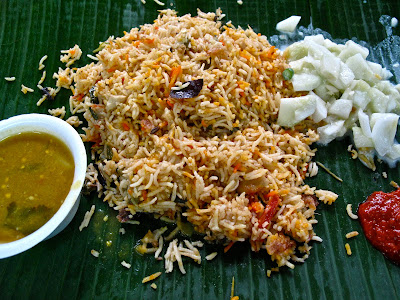
Behind Raffles Hotel, there is the famous Seah St. otherwise known as Hainan 3rd St. And along Seah St., one would find 3 Swee Kees. New Swee Kee, Old Swee Kee and Zheng Swee Kee. All Singaporeans (generation X and up perhaps) are familiar with Swee Kee, which is synonymous with Hainanese Chicken Rice. There are hundreds of chicken rice stalls and restaurants now but it was Swee Kee that made chicken rice famous (and so did Chatterbox in a different way).

Swee Kee was run by Mr. Mok Fu Swee 60 some years ago along Middle Road but of course now the place is no longer there. Mr. Mok Fu Swee was a protege of Mr. Wong Yi Guan, a Hainanese, who adapted the original Hainan Chicken Rice into what it is today -that was in the mid 19o0's. Now along Seah St., you have restaurants that bear the Swee Kee name but they are not his proteges. Some might say that Swee Kee is simply famous because there were not much competition back then. Is that really so?

The taste of Swee Kee captivated the palate of many Singaporeans as well as non-Singaporeans. The impact is huge to the point that the flavor is now a nostalgia, like grandma's cooking. There are many styles of chicken rice now and the traditional chicken rice is becoming less common. Young people's palate is changing but people who have tasted Swee Kee can always relate (or trip back to the good old times once they taste the traditional style chicken rice) to the good old times. I don't know if this is a good analogy but, in Japan, there are so many new instant noodles coming out every week. But if you look at the statistics, what usually sells most is the basic Cup Noodle by Nissin. More competion but still the basic Cup Noodle sells the most even though people's palate is changing. Also in Japan, the ramen noodle trend is towards super robust soup combining pork bones, chicken bones and dashi simmered for days. Yet, these ramen shops do not last for decades. The ramen noodle shop that stood the test of time is teh ramen with very simple and yet subtle soup base -very light in flavor but has depth and their styles never change whether the trend changes or not. And those are the places I usually go now for pure pleasure (I check out the new ramen shops only because I am in the food industry). For certain type of dishes (not all), nobody is expecting a change and it is wise to not change things.
有名ラッフルズホテル裏の通りシアストリート(Seah Street)はハイナニーズ(海南系シンガポリアン)コミュニティーとして有名だ。昔この通りはハイナン3番街(Hainan 3rd Street)として知られていた。今では、このシアストリートにスイ・キー(瑞記)がなんと3件も存在する:新瑞記(New Swee Kee)、老瑞記(Old Swee Kee)、正瑞記(Zheng Swee Kee)。チキンライス好きはかならず耳にした事があるスイ・キー。瑞記は今のチキンライスをポピュラーにしたお店である。1900年代中頃にミドルロード(Middle Rd.)にモッ・フー・スイ(Mok Fu Swee)と名乗る一人のハイナニーズがポピュラーにした料理がハイナニーズチキンライスだ。そのお店の名が瑞記で、直訳するとシェ瑞又は瑞さんのお店だ。70年代は瑞記=チキンライスというくらいに有名になり、閉店した今でもその伝説は語り継がれている。その名を利用しているお店がこのSeah Streetには3件も存在するのだ。シンガポール食通の知人曰く、最も瑞記スタイルに近い(クラシック式チキンライス)お店は正瑞記だそうだ。英語だが彼の書いた店の評価→
こちら。
 シンガポールではいたるとこれでHor Fun(河粉)を食す事が出来る。本来はサーホーファンというがホーファンという名が今では定着している(シンガポール外でもそんな呼ばれ方してるかな〜)。ビーフホーファンや海鮮ホーファン(炒めたものや、さっくりボイルしてソースと和えたもの等)はホーカーセンターでは定番のメニューとなっている。少しクエイティオウより細めの時もあるし、太めで薄めの時もあるが同じ米粉で出来てる −基準はあるのか?ホーファンというと実はシンガポールよりマレーシアの都市、イポーが有名だが、勉強不足だったのだが、サーホー(砂河)とは中国広東省の町名だという事に気がついた。そこの名物が米粉で出来たサーホーファンなのだ。イポーがサーホーファンで有名なのもうなづける。というのもイポーは元々、1900n年代初期に鉱山町として急速に発展を遂げて、広東省からの移民が途絶えなかったのである。サーホーファンの麺がクエイティオウという形でシンガポール、タイ、ベトナムカンボジアへと渡ったのだそうだ。食文化の歴史はあまり大学の専攻ではないが、あるといいな〜。
シンガポールではいたるとこれでHor Fun(河粉)を食す事が出来る。本来はサーホーファンというがホーファンという名が今では定着している(シンガポール外でもそんな呼ばれ方してるかな〜)。ビーフホーファンや海鮮ホーファン(炒めたものや、さっくりボイルしてソースと和えたもの等)はホーカーセンターでは定番のメニューとなっている。少しクエイティオウより細めの時もあるし、太めで薄めの時もあるが同じ米粉で出来てる −基準はあるのか?ホーファンというと実はシンガポールよりマレーシアの都市、イポーが有名だが、勉強不足だったのだが、サーホー(砂河)とは中国広東省の町名だという事に気がついた。そこの名物が米粉で出来たサーホーファンなのだ。イポーがサーホーファンで有名なのもうなづける。というのもイポーは元々、1900n年代初期に鉱山町として急速に発展を遂げて、広東省からの移民が途絶えなかったのである。サーホーファンの麺がクエイティオウという形でシンガポール、タイ、ベトナムカンボジアへと渡ったのだそうだ。食文化の歴史はあまり大学の専攻ではないが、あるといいな〜。










